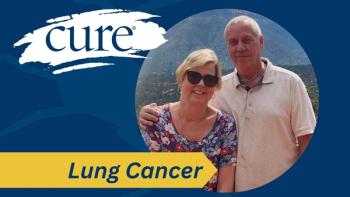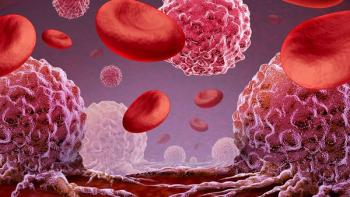
Take Charge of Your Lung Cancer Journey
During National Women’s Lung Health Week, a lung cancer survivor shares her story and success with targeted therapy.
When Kateri Langseth developed a cough in summer 2015 she didn’t think too much of it. Fast-forward to October and the then 35-year-old’s cough was only getting worse.
Langseth, a married mother of two, decided to go to an urgent care clinic. She was told she had pneumonia. Again, her cough persisted. Finally getting an appointment with her primary care physician, Langseth was told it was bronchitis.
“Then, one Saturday morning I was just beside myself,” she told CURE. “I was coughing and coughing, so I went to the emergency room (ER) because I know they do a more thorough check of you.”
The ER team performed an X-ray and CT scan. Within a few hours, Langseth — with her 11-year-old daughter in the room — was told that there was a mass on her right lung that was likely cancerous. “I was really shocked. I called my husband to come right away. We didn’t know anything for the first 24 hours,” said Langseth, who now serves as a
On Monday, an oncologist conducted a biopsy. By Friday, just before Halloween, Langseth learned she had stage 3b lung cancer. “I was relatively healthy: I tried to work out at least three to four times a week, ate healthy and did my annual checkups. I thought I was doing everything I was supposed to be doing,” she said. “So, I don’t know why people assume you get cancer that you have to be unhealthy.”
But the cancer wasn’t just on her lung. A spot was on her liver. Langseth went through two rounds of chemotherapy and 35 rounds of radiation. That treatment shrunk her lung tumor, but the liver mass doubled in size. This meant she was now stage 4. Langseth’s oncologist ruled out surgery and suggested an additional six months of chemotherapy.
“It wasn’t an option. My body didn’t handle chemotherapy well. I lost so much weight. I lost all my hair,” Langseth said. After months of being too afraid to research and seek a second opinion, she knew it was time to reach out to another oncologist.
It was the new oncologist who suggested she be tested for genetic mutations. The result: her liver tumor was epidermal growth factor receptor (EGFR)-positive.
“The oncologist called me himself on a Friday afternoon and was ecstatic. He said, ‘You won the lottery.’ And I said, ‘Do I still have cancer?’” she laughed. While Langseth still had the disease, the discovery of the EGFR mutation made her a candidate for targeted therapy.
Although it is a type of chemotherapy, targeted treatment does not work the same. Most targeted therapies go after the cancer cells’ inner workings. In Langseth’s case, she was put on the oral EGFR-inhibitor Tarceva (erlotinib) in March 2016. She experienced side effects, such as a severe rash and gastrointestinal issues, but said they were more manageable than the side effects brought on by chemotherapy and radiation.
After two scans, Langseth’s lung tumor was barely visible and the liver tumor disappeared.
New targeted and immunotherapy agents —treatment that boosts the body's own immune system to fight the disease — are helping many patients with lung cancer of all stages live longer and with fewer severe side effects. In the past decade, the U.S. Food and Drug Administration approved 13 new medications, explained Andrea McKee, M.D., chairman of radiation oncology at the Lahey Hospital & Medical Center Sophia Gordon Cancer Center in Burlington, Massachusetts.
“There is hope. People have this sense that lung cancer is a death sentence and they don’t want to learn or know about it, but that’s changing,” said McKee, who is also an American Lung Association volunteer spokesperson. “We want survivors, like Kateri, to get that message out so we can change the face of lung cancer.”
That’s why during this National Women's Lung Health Week (May 6-12), McKee stressed the importance of doing research, exploring options and screening for those who are considered high risk. “Eighty-five percent of the time we detect it at stage 1 or stage 2,” she said. “A screen-detected lung cancer has a 95 percent 5-year overall survival rate. So, in those people we are making a big difference.”
The biggest preventable risk factors for the development of lung cancer include tobacco smoking and radon and asbestos exposure. “It’s really important for us to know if a patient is a smoker or a nonsmoker because the biology of the disease can be very different,” McKee said. “For example, female nonsmokers are much more likely to have an adenocarcinoma that potentially carries one of these targetable mutations that we can then use for treatment.”
For Langseth, now 38, the targeted drug she remains on has been life-changing. “It is working like magic. My quality of life is way better than I expected,” she said. Langseth is back to work, takes her kids to school, goes on daily walks and spends time with her husband.
“Try to enjoy life,” Langseth said. “I was trying to get through life the best way I could — raising my kids and working — and I wasn’t enjoying it. And, I hate to say this, but I enjoy my life more now than I did before because I got rid of all my stresses.”





